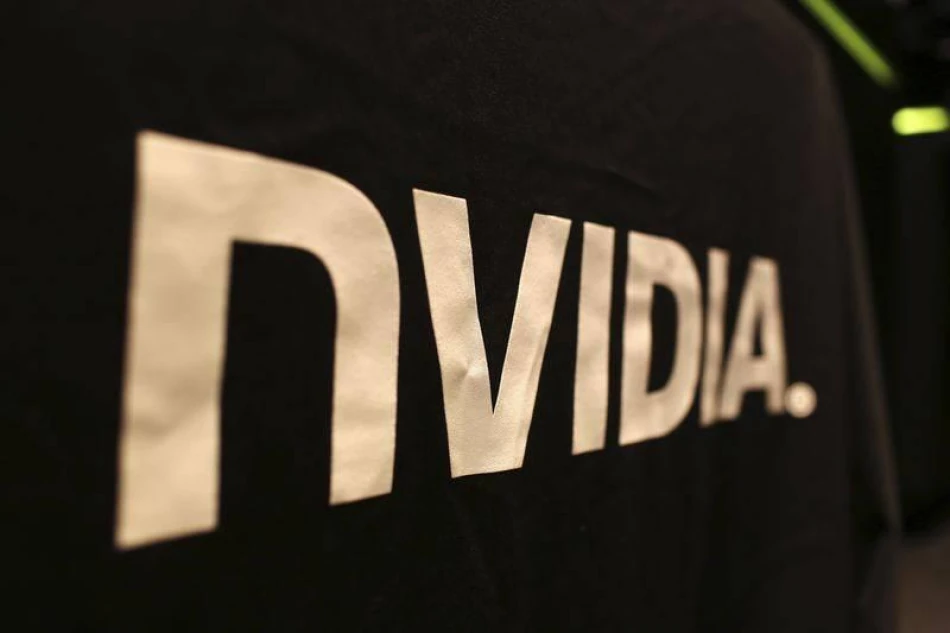
NVIDIA Unveils Cutting-Edge AI Platform for Advanced Robotics
NVIDIA Unleashes Next-Gen AI Powerhouse: Jetson AGX Thor Targets Industrial Revolution
NVIDIA has launched its most powerful edge AI computing platform yet, the Jetson AGX Thor development kit, delivering a massive 7.5x performance boost over its predecessor while consuming significantly less power. This release signals NVIDIA's aggressive push into physical AI applications across manufacturing, logistics, and healthcare—sectors worth hundreds of billions in automation potential.
Performance Leap Positions NVIDIA for Edge AI Dominance
The Jetson AGX Thor represents a quantum leap in edge computing capabilities, powered by NVIDIA's cutting-edge Blackwell GPU architecture. With 128GB of memory and delivering up to 2,070 teraflops of AI processing power within just 130 watts of power consumption, the platform achieves 3.5x better energy efficiency than the previous Jetson Orin generation.
This performance-per-watt improvement is crucial for industrial applications where power constraints and heat management directly impact deployment costs and operational feasibility. The specifications suggest NVIDIA is targeting applications that previously required cloud connectivity or larger computing infrastructure.
Industry Giants Signal Major Adoption Wave
The platform has already secured backing from technology heavyweights including Agility Robotics, Amazon Robotics, Boston Dynamics, Caterpillar, Hexagon, and Meta. This early adoption by industry leaders indicates strong market confidence in the platform's commercial viability.
Amazon's involvement is particularly significant, given the company's massive logistics operations and ongoing automation initiatives across its fulfillment centers. Similarly, Caterpillar's participation suggests heavy machinery and construction equipment will increasingly integrate sophisticated AI capabilities directly at the edge.
Market Positioning Against Growing Competition
NVIDIA's timing appears strategic as competitors like Intel, Qualcomm, and emerging Chinese chipmakers intensify their focus on edge AI processors. The company's existing ecosystem advantage is substantial—over 2 million developers currently use NVIDIA's robotics platform, while more than 7,000 companies deploy Jetson Orin modules across various sectors.
This installed base, cultivated since 2014, now encompasses over 150 hardware, software, and sensor technology partners. Such network effects create significant switching costs for customers and provide NVIDIA with valuable data on real-world deployment patterns.
Investment Implications and Market Outlook
The launch reinforces NVIDIA's strategy to diversify beyond data center GPUs into edge computing markets. While data center revenue remains the primary growth driver, edge AI represents a massive addressable market as industries digitize physical operations.
For investors, the Jetson AGX Thor launch demonstrates NVIDIA's ability to translate its AI chip leadership into adjacent markets. The platform's power efficiency gains are particularly important as edge deployments scale, where electricity costs and thermal management become significant operational factors.
Physical AI: The Next Computing Frontier
The focus on "physical AI" applications—where artificial intelligence directly controls real-world systems—represents a fundamental shift from cloud-based AI processing. Manufacturing robots, autonomous vehicles, and smart infrastructure all require real-time decision-making that cannot tolerate cloud connectivity delays.
This trend mirrors broader industry movements toward edge computing, but with AI-specific requirements for parallel processing and neural network optimization. NVIDIA's early positioning in this space, combined with its software ecosystem, creates potential for sustained competitive advantages as physical AI adoption accelerates across industries.
 Omar Rahman
Omar Rahman







